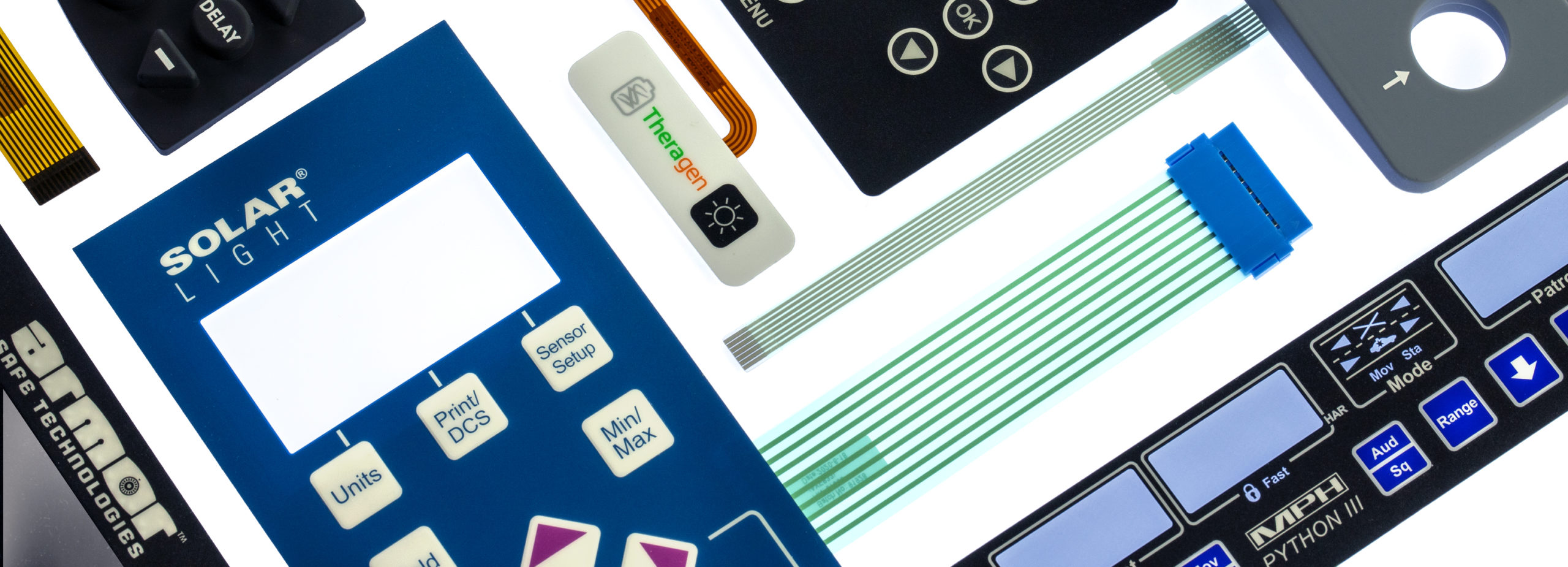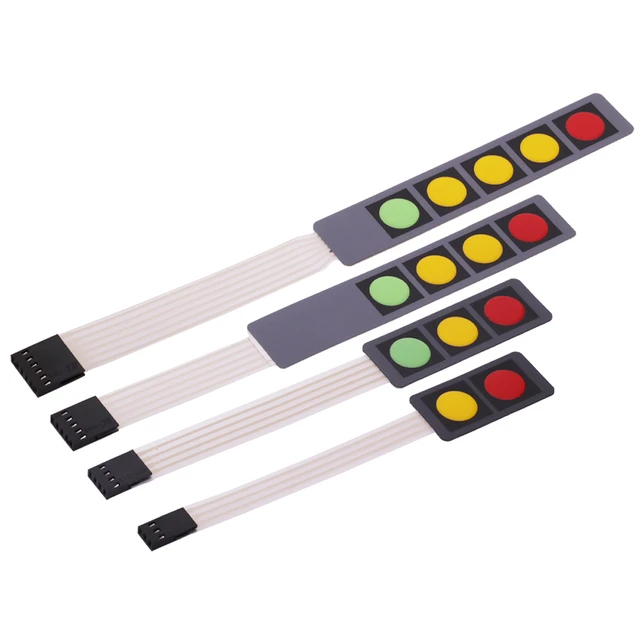The Role of Membrane Switches in Enhancing Device Functionality
The Role of Membrane Switches in Enhancing Device Functionality
Blog Article
The Benefits of Using Membrane Switches in Customer Electronic Devices
Membrane switches are progressively identified for their substantial benefits in consumer electronics, particularly in boosting customer interaction and improving production processes. The convenience in style permits for tailored solutions that meet varied customer needs.
Enhanced User Experience

In today's affordable landscape of consumer electronics, boosted individual experience is vital; almost 85% of users focus on user-friendly user interfaces. Membrane layer changes play a critical function in attaining this degree of functionality.
The tactile responses supplied by membrane layer switches is essential for leading individual activities, guaranteeing that commands are registered accurately. This comments system lessens errors and enhances individual complete satisfaction, cultivating a positive partnership between the user and the gadget. The customizable nature of membrane changes allows makers to customize user interfaces to certain customer needs, making gadgets a lot more available and welcoming.
Additionally, membrane switches can integrate backlighting and visuals overlays, further improving visibility and functionality in varied environments. This versatility makes sure that gadgets stay user-friendly and practical, no matter the setting. Generally, the combination of membrane layer switches over into customer electronic devices significantly improves customer experience, driving brand commitment and satisfaction in an increasingly open market.
Affordable Manufacturing
Customer electronics manufacturers are frequently seeking methods to stabilize top quality with cost, and membrane layer switches provide a compelling solution for economical production. These parts are naturally easier than standard mechanical buttons, which minimizes both manufacturing costs and complexity. The lightweight design of membrane layer changes enables reduced delivery costs and much easier combination into compact devices, better boosting their charm in a competitive market.
Producers can generate membrane buttons in high volumes, making use of economies of range. This automation capability ensures consistent top quality while significantly reducing per-unit costs. Furthermore, the materials utilized in membrane layer buttons, such as polyester and polycarbonate, are frequently cheaper than those required for conventional button innovations, contributing to total cost financial savings.
The production procedure for membrane layer changes generally calls for less steps and much less labor compared to various other switch types. This structured method not just saves on labor prices however likewise speeds up time-to-market, enabling companies to react promptly to consumer need. Consequently, the mix of minimized material expenditures and effective manufacturing processes settings membrane layer switches over as a clever investment for producers aiming to deliver premium customer electronics at competitive price points.

Style Flexibility and Personalization
While typical mechanical switches typically impose limitations on design because of their mass and needed mounting devices, membrane layer buttons give unrivaled versatility and modification alternatives for consumer electronics. This innovative innovation allows designers to develop streamlined, inconspicuous interfaces that can effortlessly incorporate into various item looks, from smart devices to kitchen area devices.
Membrane layer buttons can be generated in basically any shape or dimension, enabling producers to tailor the design to details ergonomic and practical needs. image source This versatility not just boosts user experience yet additionally enables creative designs that align with brand identity. Moreover, the usage of printed graphics on membrane layer switches over provides the opportunity for detailed layouts and dynamic shades, which can be easily changed without significant expense ramifications.
Additionally, membrane layer switches can incorporate several functionalities right into a single layer, reducing the requirement for multiple components and streamlining setting up processes. This streamlined style technique lessens room and weight, making it perfect for small customer electronics. On the whole, the style flexibility and personalization abilities of membrane switches empower makers to innovate, ultimately leading to more appealing and easy to use items.
Resilience and Dependability
As innovation remains to evolve, the longevity and reliability of membrane switches have come to be vital factors to consider for makers in the customer electronic devices market (membrane switch). Membrane layer switches are made to stand up to harsh environmental problems, including temperature changes, wetness, and dirt direct exposure. Their robust building and construction usually includes multi-layered materials that provide an efficient obstacle versus pollutants, ensuring longevity and regular performance

In addition, membrane buttons can endure a substantial number of actuations without loss of capability, frequently going beyond millions of cycles. This durability converts to decrease replacement expenses and lowered downtime for consumers and producers alike. On the whole, the combination of environmental durability and mechanical reliability makes membrane changes a calculated choice for consumer electronic devices, ensuring that tools stay effective and operational throughout their intended life-span.
Streamlined Product Development
The toughness and integrity of membrane layer switches over dramatically contribute to streamlined product development in the consumer electronics market. By incorporating these buttons early in the layout procedure, suppliers can reduce the complexity and number of components required in their items (membrane switch). Membrane layer switches are small and lightweight, allowing for extra reliable area use within tools, which can cause simplified assembly processes
Furthermore, the customization capabilities of membrane layer buttons make it possible for over here developers to tailor functions specifically to consumer requirements without incurring extreme prices or hold-ups. This adaptability cultivates advancement, as business can rapidly iterate layouts based on market responses, ultimately speeding up the time-to-market for new items.
The simplicity of making membrane layer switches likewise plays a vital role in item development. With modern printing methods and materials, production can be scaled efficiently, reducing and lessening lead times waste. This results in reduced manufacturing expenses, improving total earnings.
Conclusion
Finally, membrane switches over substantially boost consumer electronic devices by providing an improved individual experience, cost-effective manufacturing procedures, and versatile design choices. Their longevity and integrity ensure constant efficiency in various settings, while structured product development assists in quicker time-to-market. These benefits jointly contribute to the advancement and capability of consumer gadgets, attending to the advancing demands of individuals successfully. The assimilation of membrane layer switches over stands for a critical choice for manufacturers looking for to optimize item design and efficiency.
Membrane buttons are significantly acknowledged for their considerable advantages in customer electronic devices, especially in enhancing user interaction and streamlining manufacturing procedures. Furthermore, the materials used in membrane layer buttons, such as polyester and polycarbonate, are often much less costly than those required for standard switch technologies, like this adding to general expense savings.
The production process for membrane changes typically requires less steps and much less labor contrasted to various other button kinds. Unlike typical mechanical switches, which might put on out over time, membrane layer switches over make use of a covered design that minimizes the threat of mechanical failing.In final thought, membrane switches over significantly improve consumer electronics by supplying an improved customer experience, cost-effective production processes, and flexible design options.
Report this page